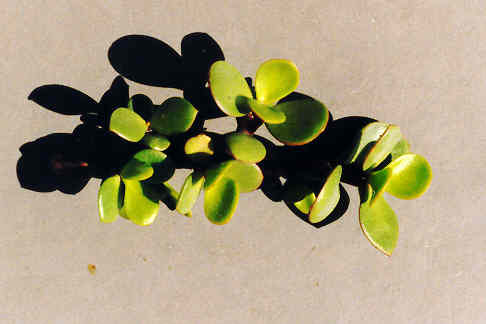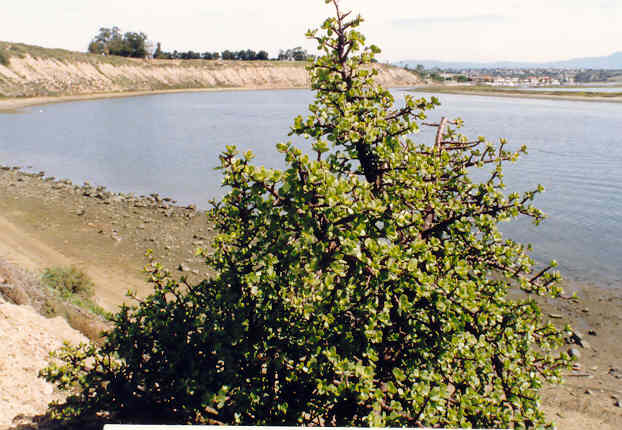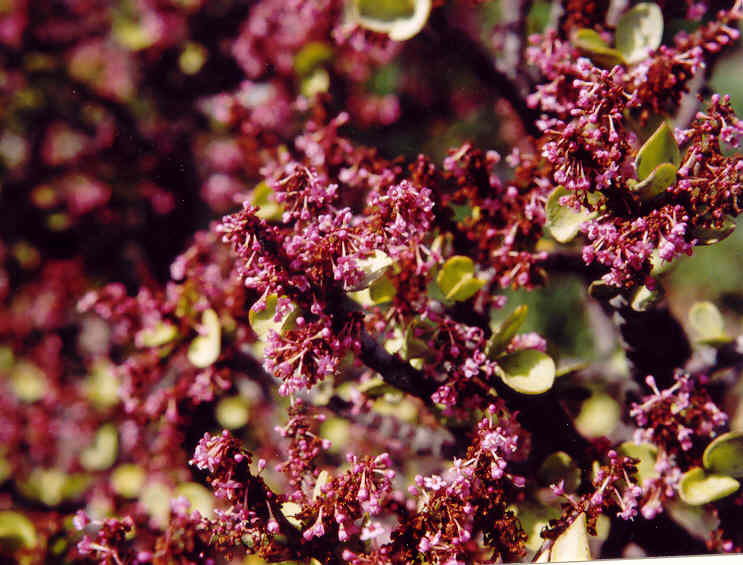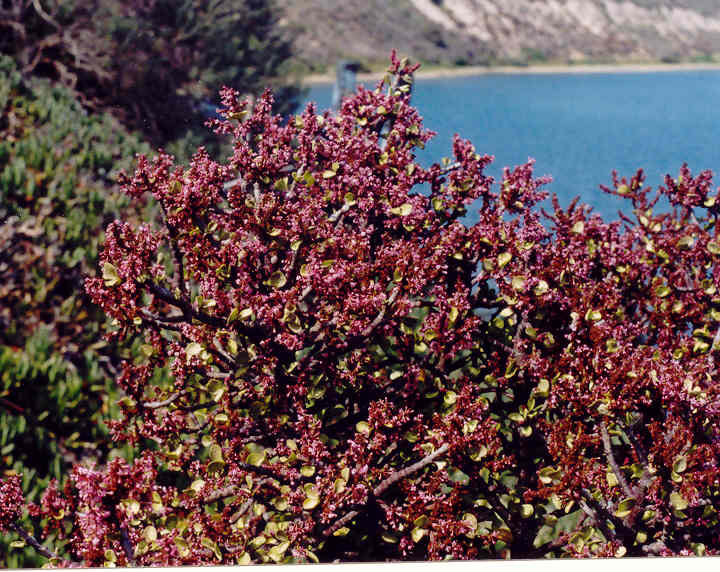
Portulacaria afra Jacq.
 |
Portulacaria afra Jacq.
Portulacaceae (Purslane Family)South AfricaElephant's Food |
June Photo
Plant Characteristics:
Glabrous thick juicy-stemmed shrub to 12 ft. tall and nearly equal width,
branches articulate; lvs. opposite, with each succeeding pair turned 90 degrees
to the pair below, obovate, oval or oblong-spatulate, tip mucronate, glabrous,
shining, green, sessile, 1-1.2 cm. wide, 1.4-1.6 cm. long, +/- 2 mm. thick at
center; fls. approx. 2 mm. long, pink, clustered, petals 5, persistent;
short-pedicelled; sepals 2, persistent; stamens 4-7; ovary superior, 3-angled,
with sessile stigma; fr. indehiscent, 3-winged, 1-seeded.
Habitat:
Grown indoors in pots or moderately sheltered outdoor locations.
Drought and fire resistant. Same
culture as the jade plant Crassula argentea but will endure desert sun
and heat which the jade plant will not. Often
called miniature jade plant as its growth habit is similar. Seldom blooms in the western U.S. (Sunset Editors, New Western Garden Book 1984.
425).
Name:
Portulaca-ria: resembling portulaca.
Latin, portulaca, a name for purslane.
(Jaeger 205). Afra,
African. (Bailey 365, 10).
General:
Uncommon in the study area. Found
twice on the Castaway's Bluffs where it was probably thrown as cuttings from
garden cultivation around the old restaurant that was above on the mesa. (my
comment). In August 2004, I found one of the Castaway’s plants
blooming, it was covered with small dark pink flowers.
The leaves have an acid lemony taste and are eaten raw as a snack in times of
famine. (Information on the identification plaque at Kirstenbosch National
Botanical Gardens, Cape Town, South Africa).
Two South African species.
(Bailey 365).
Text Ref:
Bailey 365; Sunset Editors, New Western Garden Book 1984 425.
Photo Ref:
Feb-April 91 #9,10; Aug-Sept 04 # 4,5.
Identity: by Charlie O'Neal at the UCI arboretum.
First Found: February 1991.
Computer Ref: Plant Data 413.
Plant specimen donated to UC Riverside in 2004.
Last edit 4/15/06.
 |
 |
 |